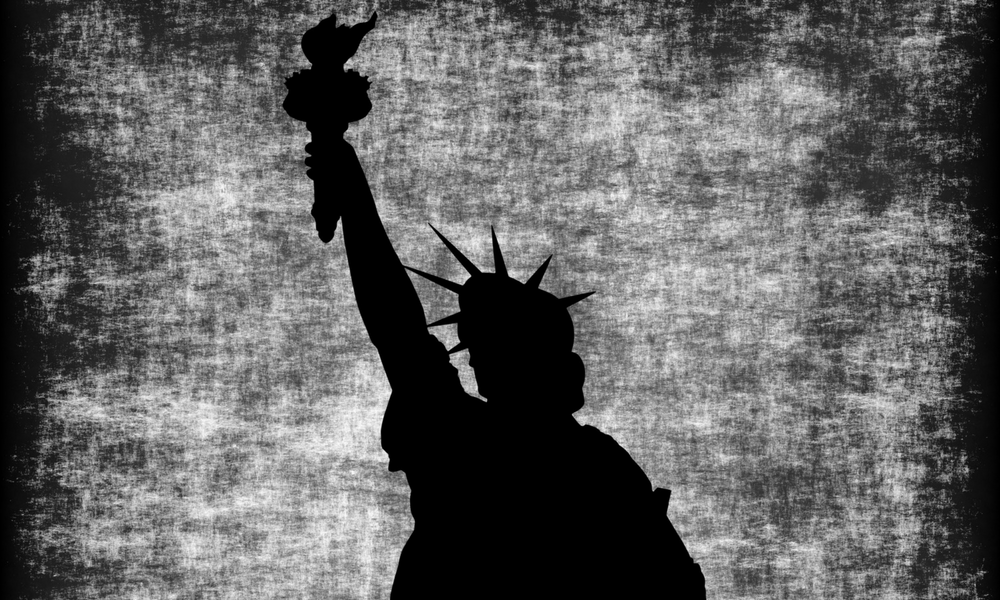
by Vicki Soogrim – Follow @VickiSoogrim
I was on the train with my sister, brother-in-law and nephew when I heard someone say:
“What the f–k, man? All these f–king Indian people coming into our country and taking our jobs. They should just go back to their countries and swing on their f–kin’ vines in the jungle or do whatever it is they f–kin’ they do. Comin’ into our country and don’t even f–kin’ know how to speak English. We had to fight for our right to work here from those slavery days. I f–kin’ hate these people, man.”
I realized at that point this man had been talking about us to a stranger who was agreeing with him. We were on the train together for a while, and I knew he was angry and ranting about some people, but I didn’t know those people were us. I didn’t think he would target us for how we looked.
I began shaking, and my palms became sweaty. I wanted to tell him that he was wrong, that his statements were completely false and that he had no idea what he was talking about, but I felt completely powerless and filled with fear in that moment.
Five years later, I remembered this moment when I came across Jimmy Kimmel’s “Fierce DACA Opponents Meet DREAMer Family Face to Face.”
Kimmel sits down one-on-one with six DACA opponents and asks them about their views. Their answers ranged the spectrum, with one woman saying that she wants to focus on “criminal aliens” and another saying DACA recipients should do as much as they can do on their part to become legal citizens. However, there was a stronger response from one man who said, “I’m not responsible for their parents’ decision to bring them here. I want every single dreamer deported. I want to start deporting every Dreamer, even before MS-13.”
[Read Related: Polarization of Immigration Reform: What Side is More ‘American?’]
As the daughter of Indo-Caribbean immigrants from Trinidad, migration has always been the underlying narrative of our story. Leaving from India to Trinidad as indentured servants, and then from Trinidad to the U.S. to have a better life, movement and adapting from one place to another has had a critical role in the history of Indo-Caribbeans.
I was born in the U.S., but for a long time, my parents and many of the people I grew up around were undocumented. I listened to stories of how people got to this country and how hard they worked, stories about people who had to work in conditions that were less than humane and were incredibly underpaid. There were stories of people who worked in fear and had to hide in the cold, dirty basements of their stores for hours when immigration officers arrived, and there were stories of people who spent their days on their feet doing manual labor.
Although I didn’t understand immigration as a child, words like “papers” and “illegal” and “green card” instilled fear in everyone and made us talk in quieter voices. However, as I got older, I began to realize the complexities of immigration, and one thing became clear: Though immigration was allowed, we were unwanted in this country by many.
Although I knew many immigration stories, the ones that always stuck with me were the experiences of being told to “Go back to your country.” It always implied a sense of belonging and otherness.
[Read Related: #WeDoBelongHere: My Immigrant Husband and Parents Are Just as American as Me]
Even though I was so hurt over what the man on the train had told me, it got me thinking about how large the gap is between conceptions and realities of immigrants in the U.S. A few stereotypes and misconceptions include unemployment and getting everything for free, taking away the jobs of citizens and bringing crime, drugs and violence from their native countries.
Unfortunately, a lot of these ideas are sustained by the current Trump administration, in which they use gangs like MS-13 to instill fear in people about immigrants (though they use a sample that is unrepresentative of the population).
While political immigration reform is an issue within itself, the ideology behind banning and limiting certain groups of people is absolutely flawed. Change lies in spreading awareness about the truths of people because, ultimately, immigrants are humans too.
 Vicki Soogrim is a junior at Barnard College studying Psychology and Gender Studies. She enjoys writing about intersectional feminism and identity, particularly because she is Indo-Trinidadian and believes that writing is fundamental to changing the world. When she’s not locking herself up in a library she is probably dancing, binge-watching the best scenes from Game of Thrones, and catching up on what Zayn has been up to.
Vicki Soogrim is a junior at Barnard College studying Psychology and Gender Studies. She enjoys writing about intersectional feminism and identity, particularly because she is Indo-Trinidadian and believes that writing is fundamental to changing the world. When she’s not locking herself up in a library she is probably dancing, binge-watching the best scenes from Game of Thrones, and catching up on what Zayn has been up to.




